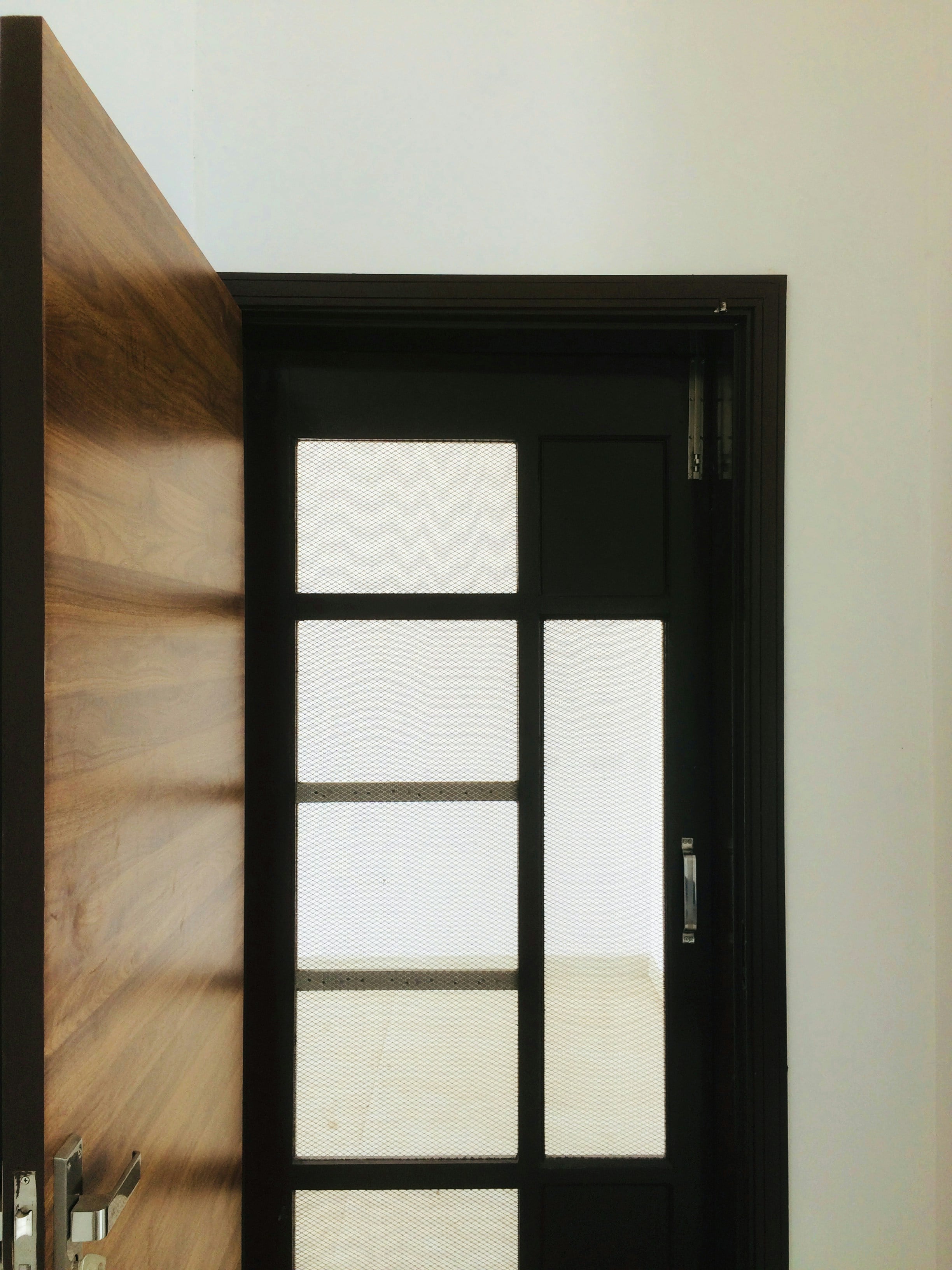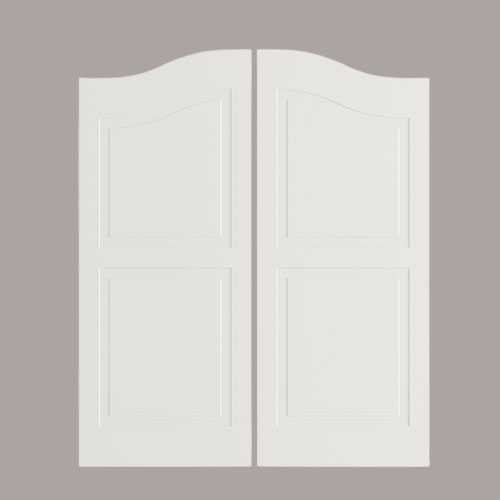
Futuristic Materials Transforming Interior Door Design: Innovations Shaping Tomorrow's Homes
Futuristic Materials Transforming Interior Door Design: Innovations Shaping Tomorrow's Homes
Step into the future of home interior design with the latest breakthroughs in door materials. As the boundaries of innovation in the interior space continue to expand, a new wave of futuristic materials is emerging, promising not just aesthetic enhancement but also significant upgrades in functionality, sustainability, and efficiency.
In this extensive exploration, we'll unveil a range of cutting-edge materials capable of reshaping your perception of what an interior door can be. From the space-age potential of smart glass to the biodegradable revolution of bio-based polymers, it's time to discover how these materials are creating doors that are not just portals but also pieces of the home of the future.
Introduction to Futuristic Materials in Interior Door Design

The raw materials of innovation have always been at the heart of progress, and the realm of interior door design is no exception. Take a closer look at this embryonic field, and you'll witness an exciting fusion of technology with touchable and functional elements.
Evolution of Interior Door Materials
Traditional interior doors have evolved from simple, functional elements to key design features that lend character to a space. Materials such as wood, glass, and metal have been mainstays in the repertoire of door design, but as we push the envelope further, new technologies bring opportunities to integrate futuristic materials that offer properties unheard of in prior iterations.
Importance of Innovation in Interior Design Trends
In an age where sustainability and efficiency weigh heavily on design choices, innovative materials are at the forefront. Interior design trends are not just about aesthetics, but also about the transformation of living spaces through forward-thinking applications of materials. Futuristic materials are a bridge between our design aspirations and the practical considerations that complement modern living.
Smart Glass

Glass has long been a symbol of clarity and openness, and with advancements in technology, it has become the canvas for futuristic possibilities.
Overview of Smart Glass Technology
Smart glass, also known as switchable glass or privacy glass, is a type of glass that can change its appearance on command, shifting from opaque to transparent and anywhere in between. This is achieved through applying a low-voltage electrical current to the glass, altering the alignment of microscopic particles within the glass, thereby allowing light to pass through or diffusing it to block vision.
Advantages of Smart Glass for Interior Doors
Smart glass offers a plethora of advantages that make it ideal for innovative interior door design.
Adjustable Transparency
The ability of smart glass to be opaque or transparent at the flick of a switch provides unprecedented adaptability in interior spaces. It offers a privacy solution that's equal parts stylish and functional, perfect for private offices or bathrooms.
Energy Efficiency Features
Smart glass can regulate the amount of light and heat entering a room, which reduces the need for artificial lighting and improves energy efficiency. This feature can help control building temperatures, making it a sustainable choice in environmentally conscious designs.
Applications and Future Potential in Interior Door Design
The potential of smart glass in the domain of futuristic interior door design is vast. Imagine interior doors that act as soundproof barriers or walls that can transform an open-floor plan room into private living spaces with a simple command. The integration of smart glass in homes is only limited by the imagination, and it's set to play a more significant role in creating dynamic living environments.
HDPE Recycled Lumber for Doors

HDPE (High-Density Polyethylene) recycled lumber is a durable, sustainable, and environmentally friendly alternative to traditional lumber for interior doors. Made from post-consumer recycled plastic, HDPE lumber reduces the need for logging and helps prevent waste from ending up in landfills. It also requires less maintenance than traditional wood doors, making it a cost-effective option for long-term use.
Customization and Design Possibilities
One of the most compelling aspects of futuristic materials is the degree to which they can be tailored to individual design preferences. This personal touch is the cornerstone of innovation in interior door design.
Tailoring Futuristic Materials to Individual Design Preferences
By working with interior door manufacturers, homeowners can select from a spectrum of textures, finishes, and colors that closely align with their vision for their living space. This level of customization ensures that every aspect of the door, from material to final coat, reflects the desired aesthetic.
Integration of Advanced Features and Technologies
Customized interior doors can be embedded with a range of technological features, such as sensors, smart locks, and energy-saving devices. These integrations enhance both the door's functionality and its contribution to the overall intelligence of the home.
Collaboration with Designers and Architects for Innovative Concepts
Collaboration is key to unlocking the potential of futuristic materials in interior door design. When manufacturers, designers, and architects work together, they can envision and produce doors that push the boundaries of conventional design, resulting in truly groundbreaking concepts.
Positive Impact of Futuristic Door Design on Home Aesthetics and Functionality
The positive impact of futuristic door design on home aesthetics and functionality cannot be overstated. Doors made with advanced materials are not just functional; they're often the focal points of modern interiors, adding a touch of sophistication and luxury to any space.
Maintenance and Care Considerations
While futuristic materials offer many advantages, they often come with unique maintenance and care requirements.
Specialized Cleaning and Maintenance Practices for Futuristic Materials
To keep doors made with futuristic materials looking their best, it's important to use cleaning practices recommended by the manufacturer. Some materials may require specific chemicals and tools to protect against damage and maintain their characteristics.
Protection Against Wear and Tear
Applying protective coatings and taking preventive measures can help extend the lifespan of interior doors made with futuristic materials. Regular maintenance checks and swift attention to any issues can prevent minor problems from turning into major ones.
Longevity and Performance of Futuristic Interior Doors
Investing in futuristic materials is an investment in the future of your home. With proper care, these doors can offer exceptional longevity and performance, making them a sustainable and cost-effective choice for the discerning homeowner.
Environmental and Sustainability Aspects
The use of futuristic materials in interior doors is not just about design and functionality; it's also about sustainability and the environment.
Evaluating the Environmental Impact of Futuristic Materials
Before selecting a door material, it's important to consider its environmental impact. Materials that are derived from sustainable sources or can be recycled at the end of their lifecycle are preferable for reducing the environmental footprint of interior door design.
Sustainable Manufacturing Practices and Certifications
Interior door manufacturers are increasingly adopting sustainable practices and earning certifications that attest to their commitment to the environment. Look for doors that are manufactured using renewable energy and responsible resource management.
Recycling and Disposal Considerations for Futuristic Interior Door Materials
At the end of their lifecycle, futuristic interior door materials can often be recycled or repurposed. Designing doors with recyclability in mind is not only good for the planet but also for creating a closed-loop system where resources are used efficiently.
Conclusion: Embracing the Future of Interior Door Design with Futuristic Materials
The use of futuristic materials in interior door design represents an exciting convergence of innovation, sustainability, and aesthetic appeal. As we continue to push the boundaries, the doors of tomorrow promise to do more than simply open and close; they will serve as gateways to a lifestyle enhanced by the latest in material science and design.
Frequently Asked Questions (FAQs)
To provide further clarity and guidance, here are answers to some common queries about futuristic interior doors and their materials.
How do futuristic interior door materials compare to traditional options in terms of durability?
Futuristic interior door materials often excel in durability due to their advanced properties. Nanomaterials and carbon fiber, for example, can be more resistant to wear and tear compared to traditional wood or metal doors.
Can futuristic interior doors be customized to fit specific design preferences?
Yes, one of the appealing aspects of futuristic materials is their high level of customizability. Homeowners can work with manufacturers to select the perfect combination of materials, finishes, and features that align with their design vision.
Are there any cost considerations when opting for futuristic materials?
Futuristic materials can initially be more expensive than traditional options due to their advanced manufacturing processes and the cost of research and development. However, their long-term benefits, such as durability and sustainability, can make them a wise investment.
How do futuristic interior door materials contribute to energy efficiency in homes?
Materials like smart glass and aerogel can significantly improve the energy performance of homes. They better control the flow of heat and light, reducing the need for artificial heating and cooling systems.
What maintenance practices are required for futuristic interior doors?
Each material has its own set of maintenance requirements. It's essential to follow the manufacturer's guidelines to ensure optimum performance over time. Regular inspections, cleaning, and timely repairs are key.
Are there any limitations or challenges associated with using innovative materials in interior doors?
Innovative materials may present certain challenges, such as the need for specialized installation expertise or limited availability. Being aware of these constraints can help in planning and execution.
Can smart technologies be integrated into futuristic interior doors?
Yes, smart technologies are often integrated into interior doors made with futuristic materials. This can include smart locks, access control systems, and even voice-activated opening mechanisms.
Are there any certifications or standards to look for when selecting futuristic interior door materials?
Yes, certifications such as LEED (Leadership in Energy and Environmental Design) and FSC (Forest Stewardship Council) can attest to the sustainability and environmental impact of materials. It's also important to choose materials that meet safety standards for building
